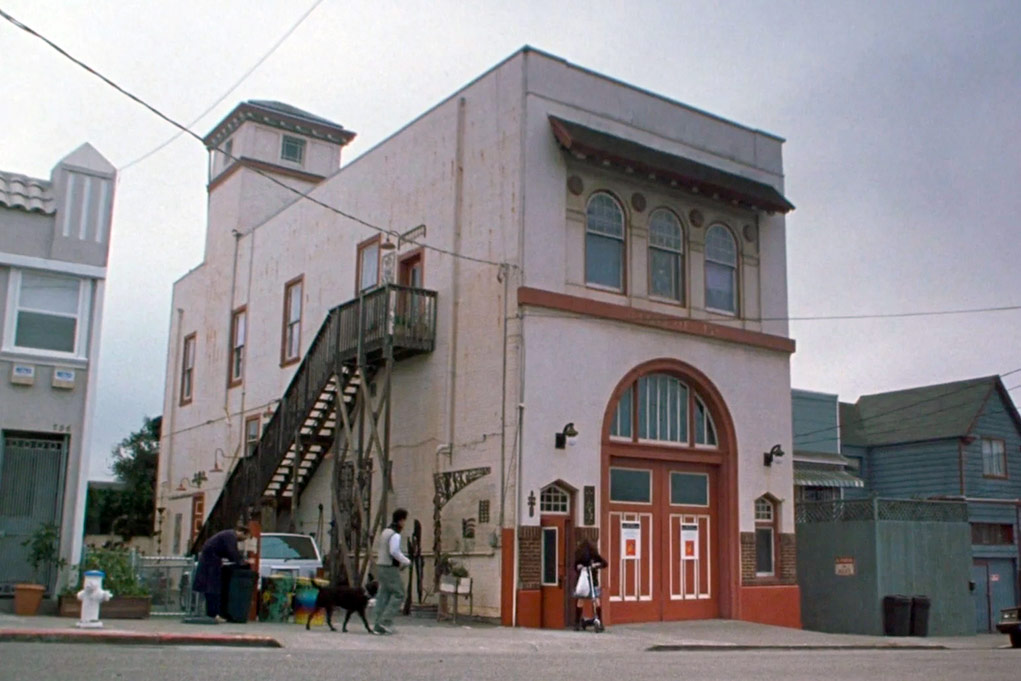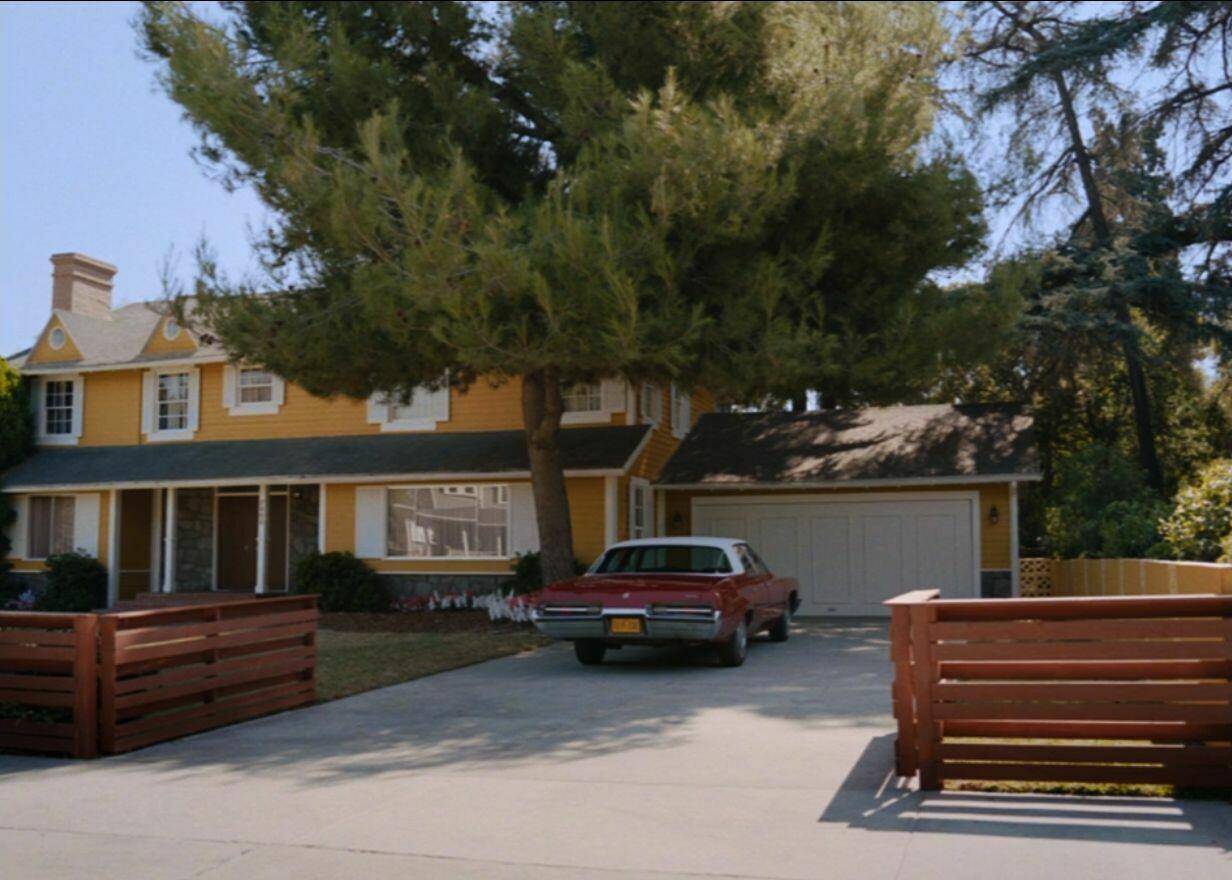In 1994, having become the world’s biggest child star, thanks to movies such as ‘Home Alone‘ and ‘My Girl’. Macaulay Culkin took on the role of’ Richie Rich’, the world’s wealthiest kid. Richie lived in a sprawling mansion set in Chicago, featuring everything from rollercoasters to its own Mount Rushmore family portrait. Unfortunately, the real house, Biltmore Estate in Ashville, North Carolina, doesn’t have any rollercoasters. It doesn’t even have a Mount Rushmore family sculpture or even its own launch catapult! However, this house is still seriously impressive!

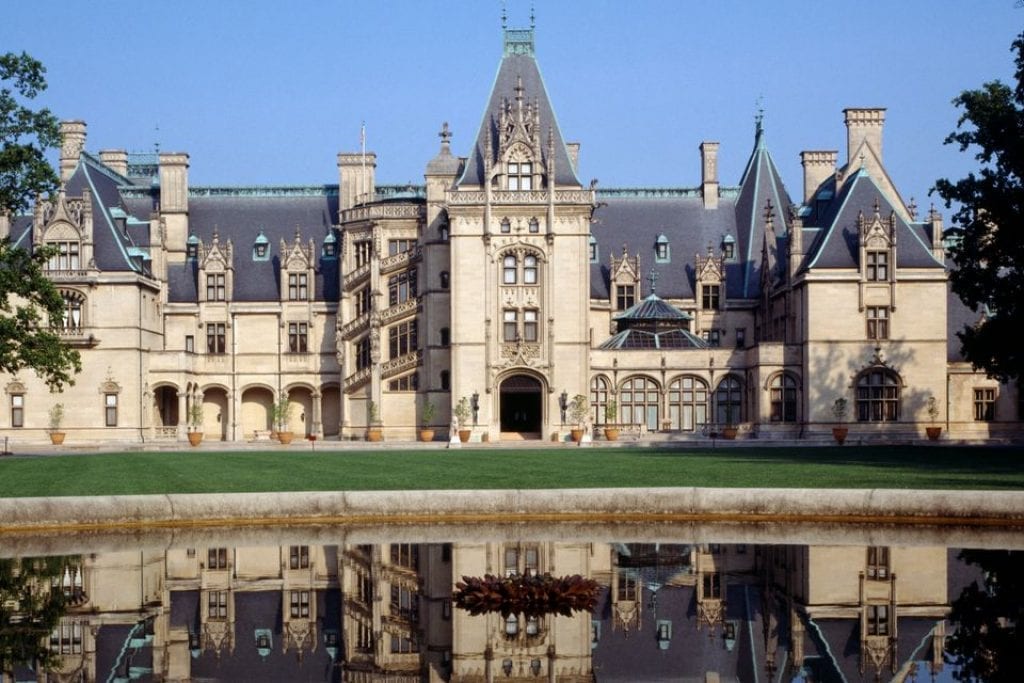
THE HISTORY OF BILTMORE ESTATE
In the 1880s, George Washington Vanderbilt II began making regular visits with his mother to the Asheville area of North Carolina. His love for the area was so great he decided to build his own house there, which he called his “little mountain escape”.
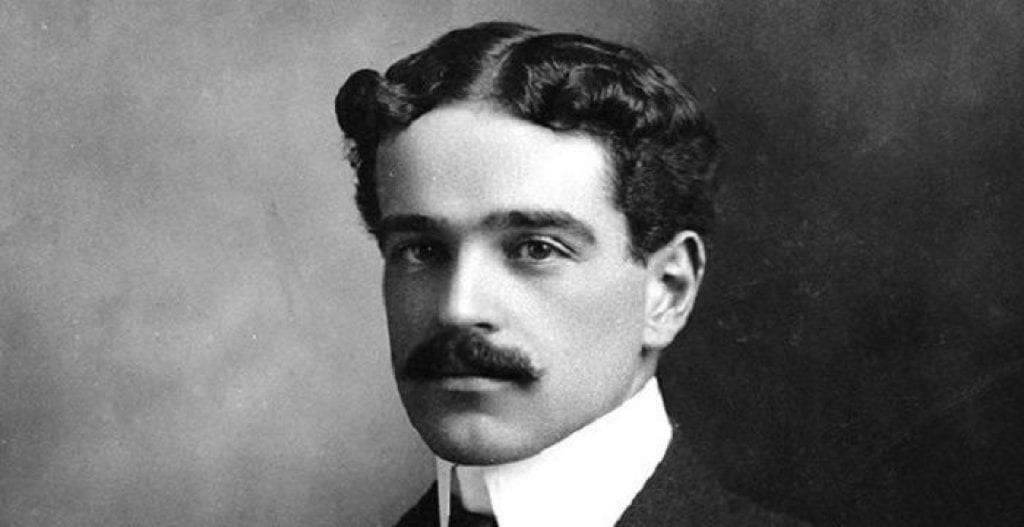
George Vanderbilt II
Vanderbilt, whose family had become incredibly wealthy through steamboats, railroads and other enterprises, bought almost 700 parcels of land. This included over fifty farms and at least five cemeteries. Much of the farmland in the area was of poor condition, so farmers were happy to sell and move on.
George Vanderbilt II commissioned new York architect Richard Morris Hunt, who had designed homes for other Vanderbilt family members, to design the house in a chateau-style. Hunt would use French Renaissance chateaus as inspiration. Vanderbilt and Hunt had visited several in early 1889, including Chambord in France and Waddeson Manor in England.
These estates shared many of the same features, including steeply pitched roofs, sculptural ornamentation, and turrets.
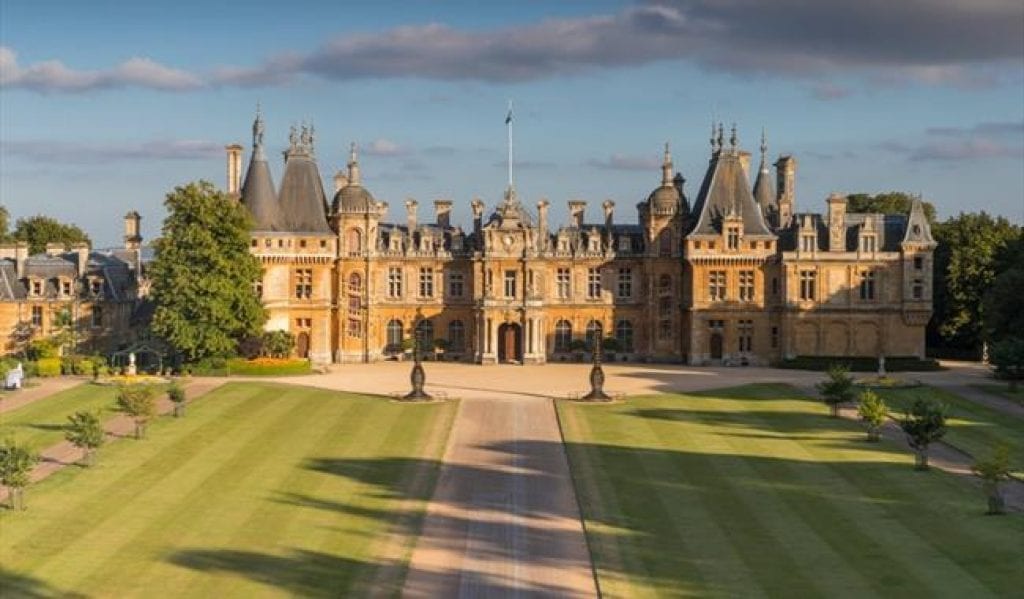
Waddeson Manor, England
Construction on the house began in 1889, because of the remote location a three-mile spur of railroad was constructed to bring materials to the building site. A woodworking factory and brick kiln were also built on the site, producing 32,000 bricks per day. Construction on the main house consisted of 1,000 laborers and 60 stonemasons.
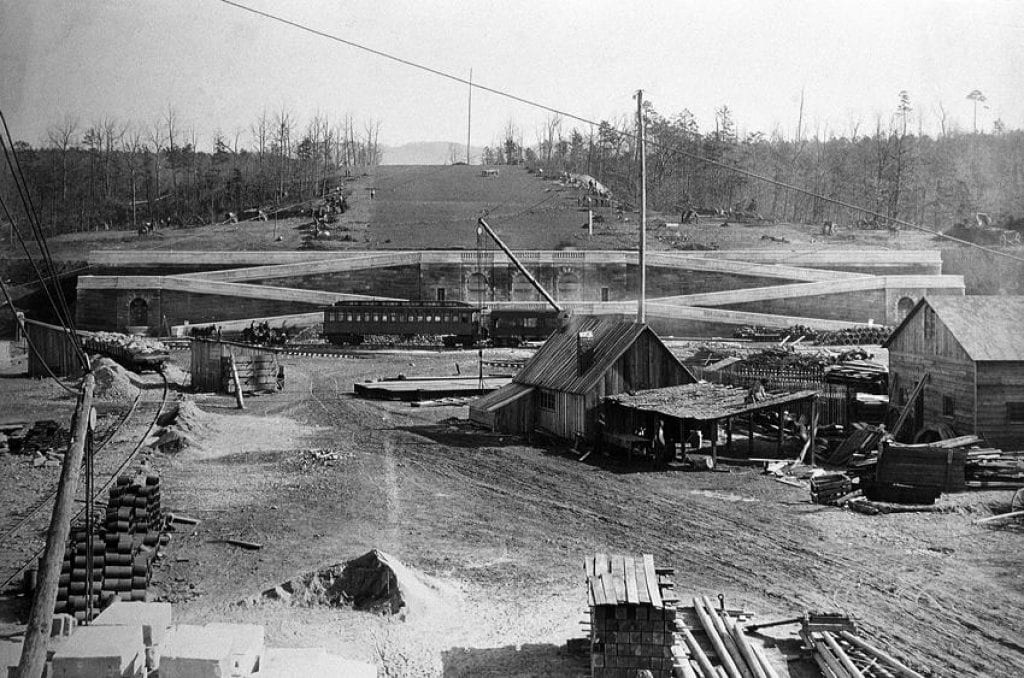
Early construction of the house, you can see the train in front of the foundations.

A piece of the 3-mile railroad, built entirely to bring materials to the construction site.
While the house was being worked on, Vanderbilt went on overseas shopping trips to find furnishings for his new home. This included carpets, tapestries, chairs, and desks, dating between the 15th and 19th centuries.
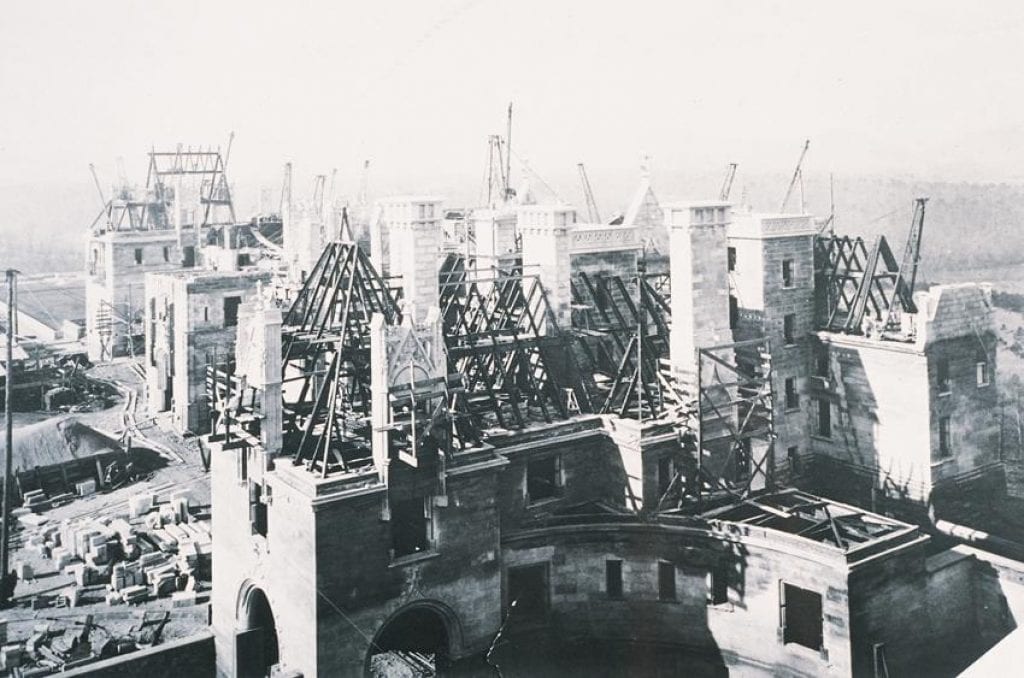
Construction in 1894, the house begins to take shape.
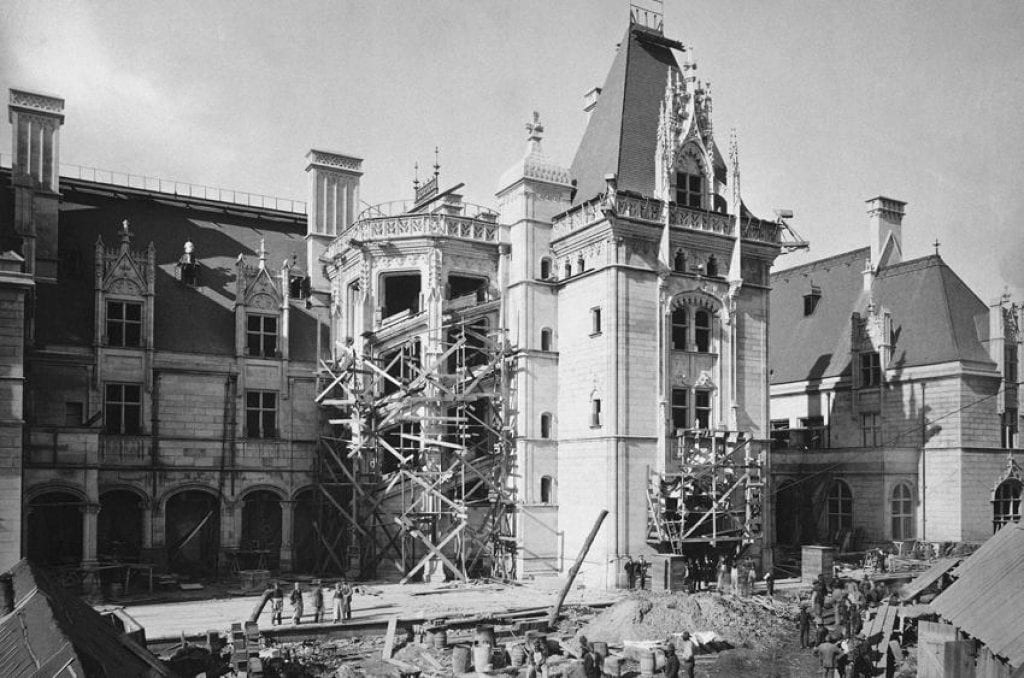
The staircase tower towards the end of 1894.
After the best part of six years, the property on Biltmore Estate was finally completed in 1895. On Christmas Eve of that year, Vanderbilt opened up the house to family and friends so that they too could experience his new home. This included several famous guests, such as authors and ambassadors.
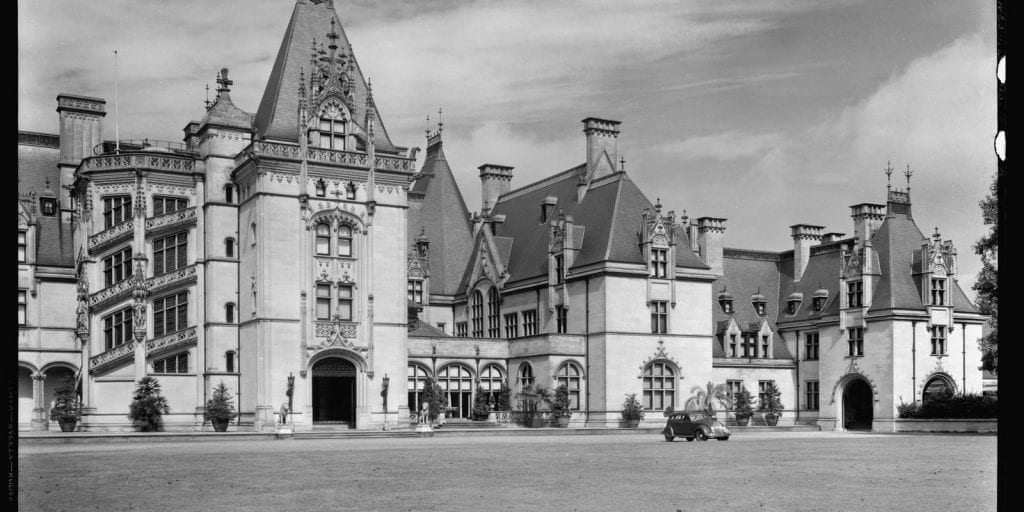
Biltmore House in the early years.
However, Vanderbilt soon realized that Biltmore Estate was hard to manage. Driven by newly imposed income taxes and the difficulty of managing such a large estate, Vanderbilt chose to sell 87,000 acres of land to the federal government.
After the unexpected death of George Vanderbilt II in 1914, his widow Edith, overwhelmed with looking after such a large estate, began to consolidate her interests. Selling Biltmore Estate Industries in 1917 and the nearby Biltmore Village in 1921, the village had been created by George Vanderbilt to house estate workers.
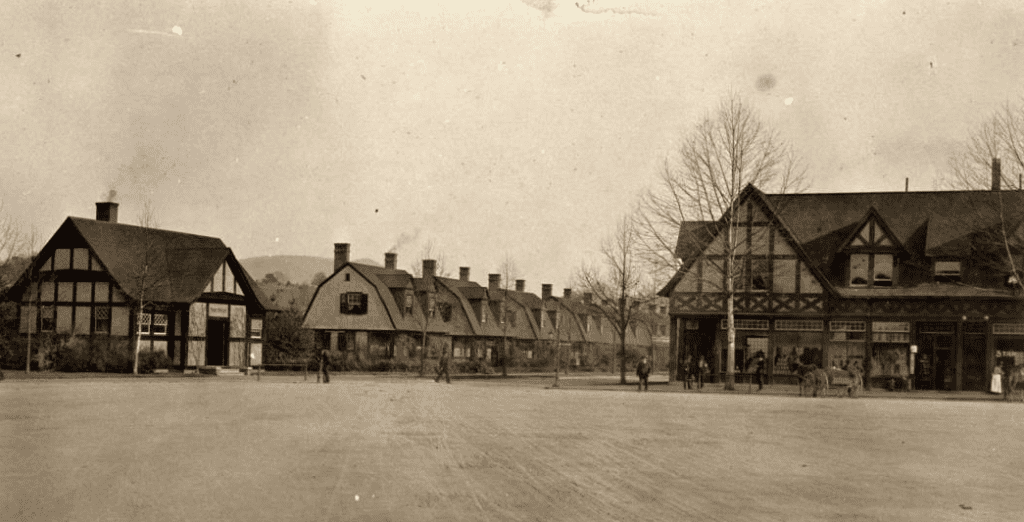
Biltmore Village, where estate workers lived.
Edith intermittently occupied the house, living in an apartment created in the former Bachelors’ Wing, until the marriage of her daughter Cornelia to John Francis Amherst Cecil in April 1924. The couple would go on to have two sons, William, and George, both born in the same room as Cornelia.
In an attempt to help the financial situation of the property, the Cecil’s opened the house to the public in 1930, at the request of the City of Asheville, who believed it could help tourism in the area.
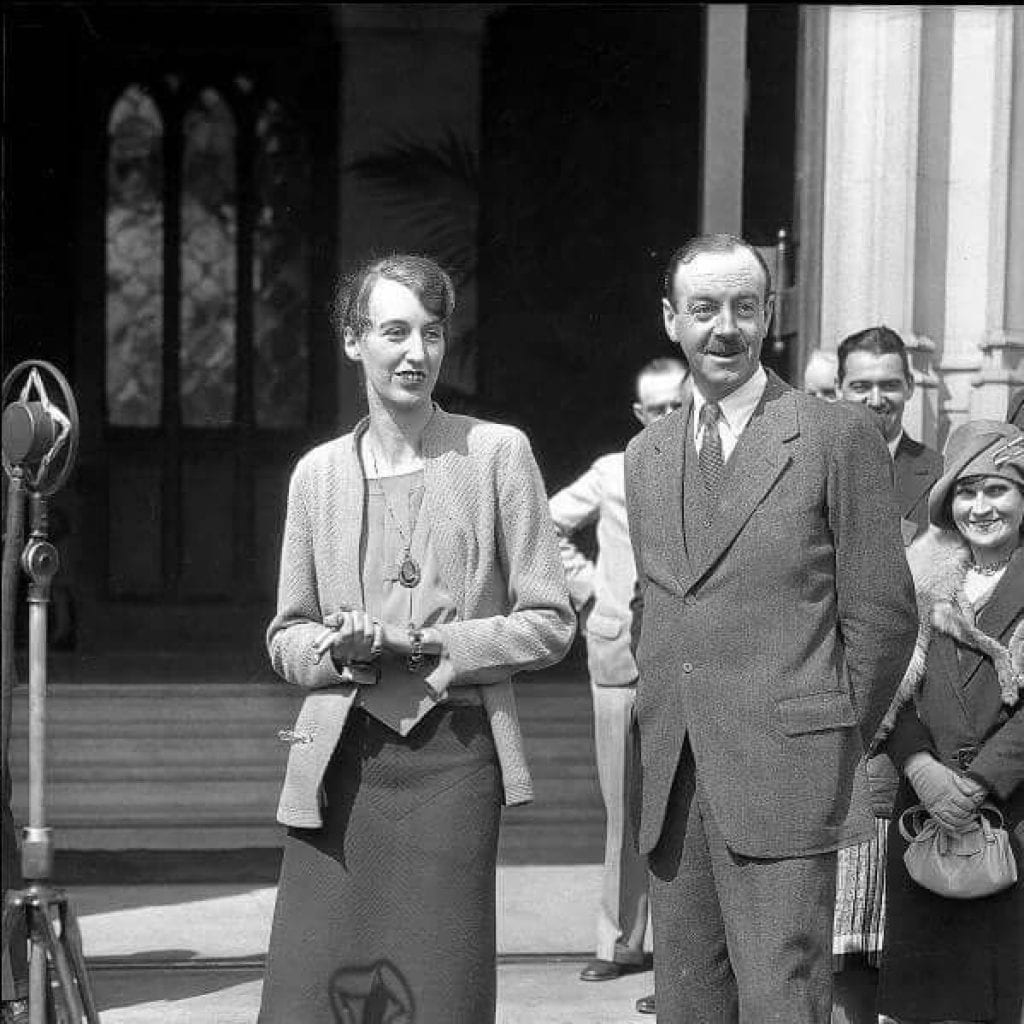
Cornelia and John Cecil opening the house to the public in 1930.
However, just four years later the Cecils would divorce and Cormneila would leave the estate, never to return. Her husband John remained at the estate and resided in the Bachelors’ Wing until his death in 1954. Their son George Cecil, remained at the house until 1956, at this point the house ceased to be a family home but continued operating as a historic house museum. In 1963, the property was designated a National Historic Landmark.
Upon the death of Cornelia in 1976, her two sons, both born in the house as she was, split the inheritance. William, the older son, took ownership of the house, while younger brother George took ownership of Biltmore Farms, which was far more profitable at the time.
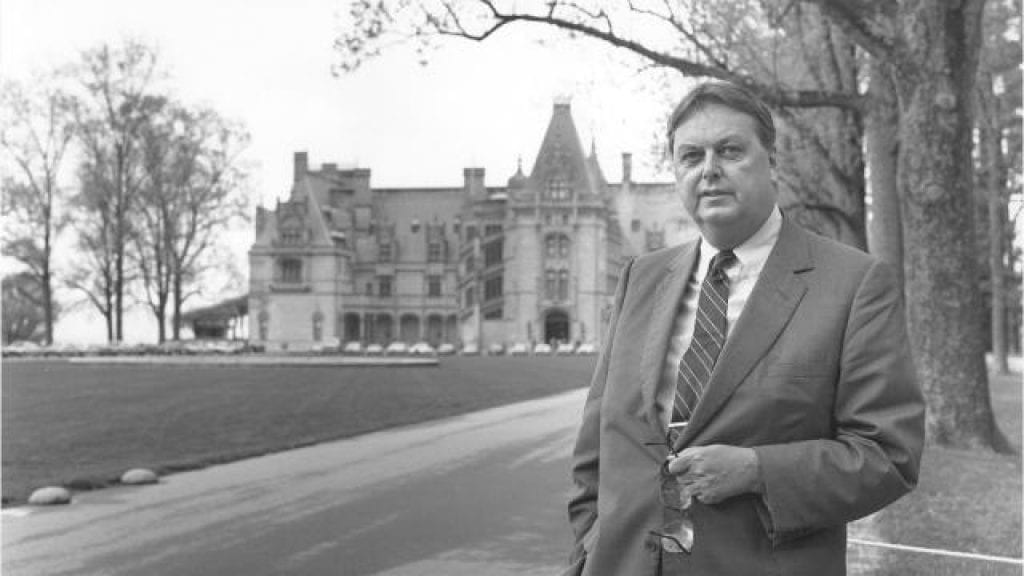
William Cecil took over the house between 1976 and 2015.
In 1995, celebrating the 100 year anniversary of the estate, William handed over control to his son William Jr. In 2017, William (89) and his wife Mimi (85) died just two weeks apart, and so the home was passed on to their daughter, Dini. Dini now serves as board chair, while her son Bill is CEO of The Biltmore Company. The home remains a popular tourist attraction in Western North Carolina, with 1.4 million visitors per year.
WORLD WAR II
During WW2, the Biltmore Estate, America’s largest privately-owned home, was used for an entirely different reason. With the possibility of an attack on the United States, David Finley, the art director of the National Gallery of Art in Washington, and friend of Edith Vanderbilt chose to use the house as storage.
In total 62 paintings and 17 sculptures from artists such as Rembrandt and Anthony Van Dyck were stored in the music room on the first floor. They remained in the house until 1944 when an attack on the United States became unlikely.
BILTMORE HOUSE TODAY

The house as it looks today, open to the public.
Biltmore Estate remains open to the public as a historic landmark and is no longer lived in. It features over four acres of floor space, spread across 250 rooms, including 35 bedrooms, 43 bathrooms, 65 fireplaces, and 3 kitchens. Some of the most notable rooms inside America’s largest privately-owned piece of real estate can be found below.
To the right of the entrance hall on the first floor is the Winter Garden. The octagonal sunken room is surrounded by stone archways with a ceiling of architecturally sculptured wood and multifaceted glass. The centerpiece of the room is a marble and bronze fountain sculpture titled ‘Boy Stealing Geese’ created by Karl Bitter.

The Winter Garden, circa 1900.
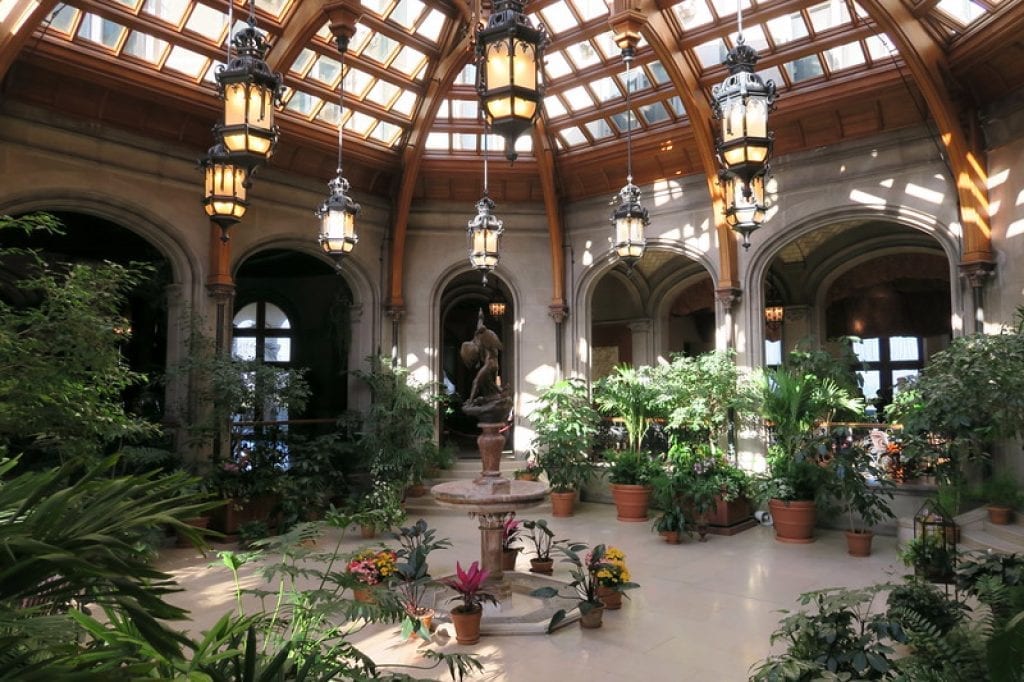
How the Winter Garden looks today.
The Banquet Hall is the largest room in the house, measuring 42 feet wide and 72 feet long, with a 70-foot-high barrel-vaulted ceiling. The table could seat 64 guests surrounded by rare Flemish tapestries and a triple fireplace that spans one end of the hall. On the opposite end of the hall is an organ gallery that houses a 1916 Skinner pipe organ.
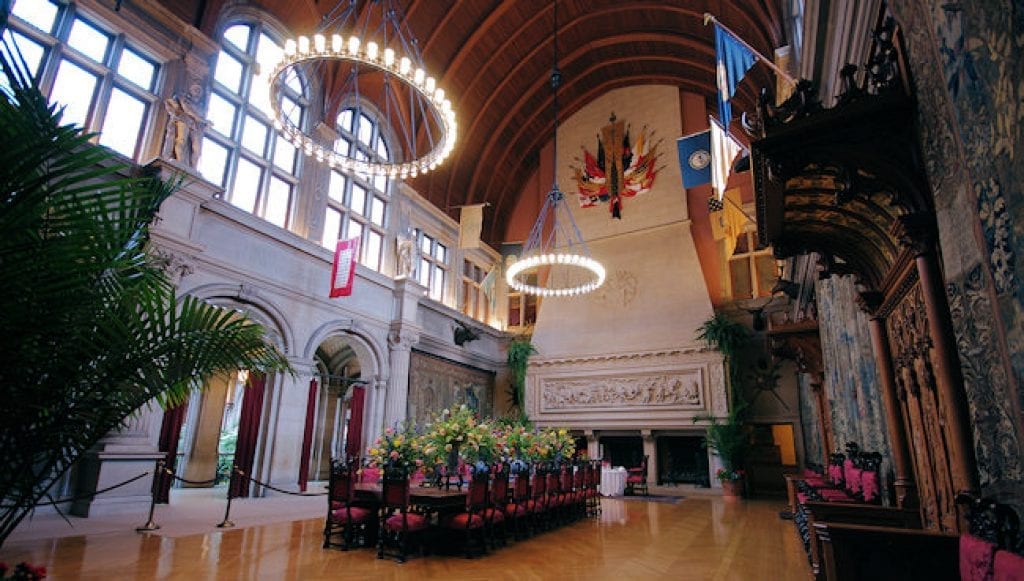
The banquet hall.
Left unfinished with bare brick walls, the Music Room was not completed and opened to the public until 1976. This was the room used to store paintings and sculptures during WW2.
To the left of the main entrance is the 90-foot long tapestry gallery, featuring three 16th-century tapestries as well as family portraits. This leads on to the library, where you can find over 10,000 books, collected by George Vanderbilt II.
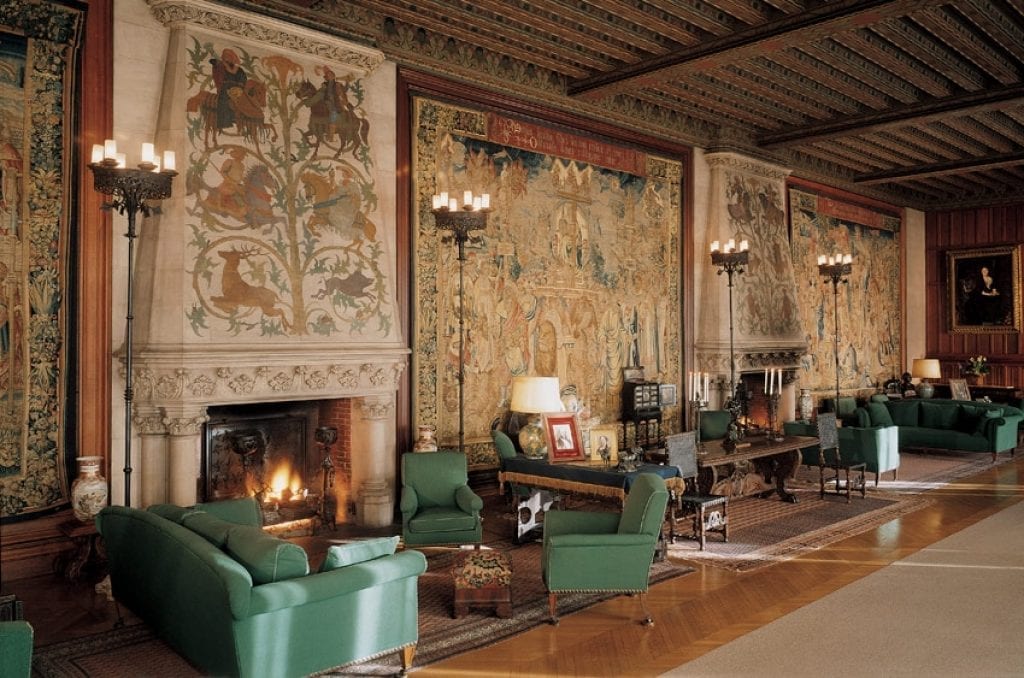
The Tapestry Gallery featuring three 16th century pieces.
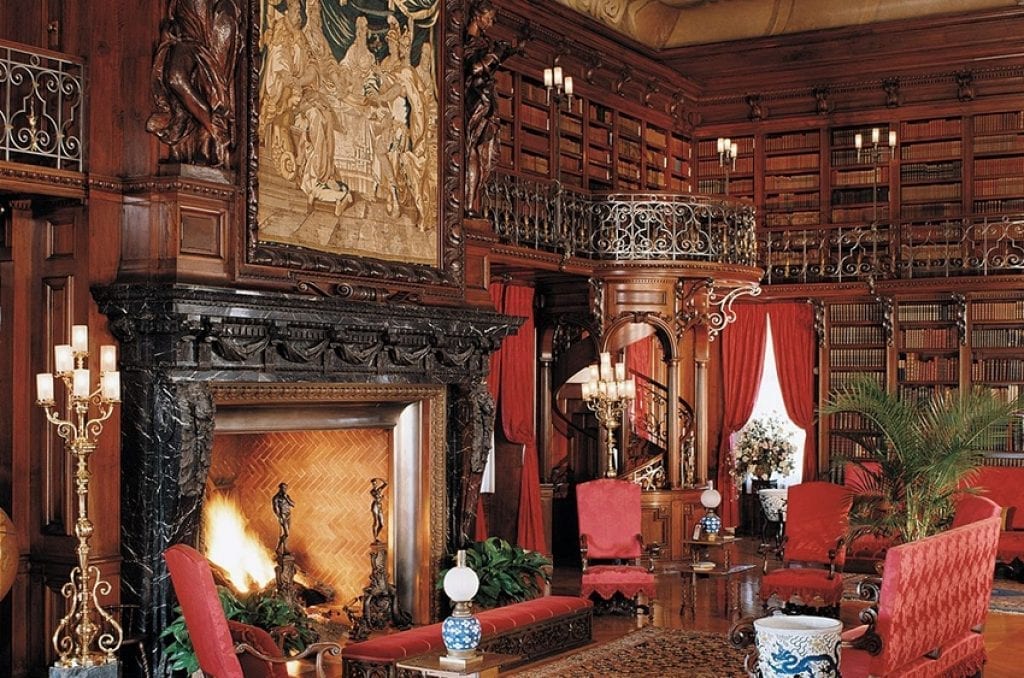
The library, home to thousands of books.
The second floor is accessed by the 107 spiraling steps of the Grand Staircase. This staircase spirals around a four-story, wrought-iron chandelier, these were actually used in the movie Richie Rich.
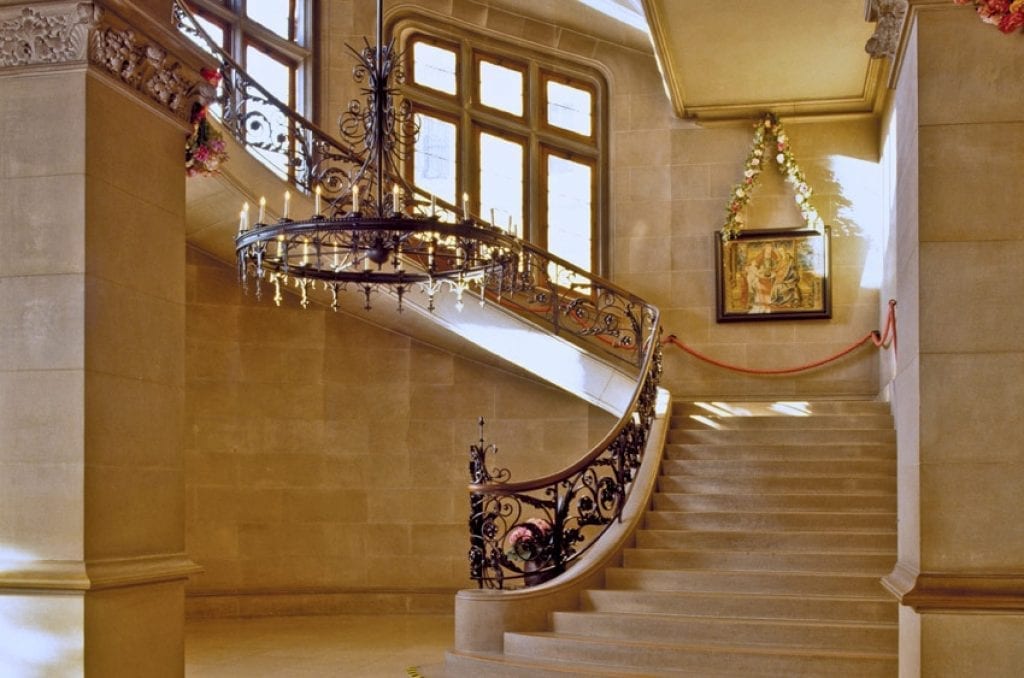
The Grand Staircase as it looks today.
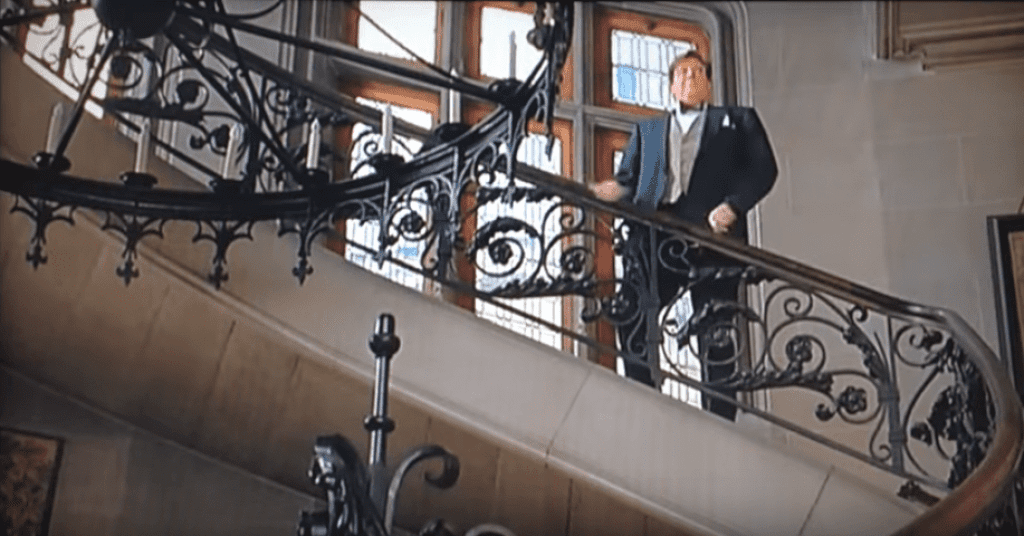
The Grand Staircase used in the movie Richie Rich.
The Second Floor Living Hall is an extension of the grand staircase as a formal hall and portrait gallery and was restored to its original configuration in 2013. Several large-scale masterpieces are displayed in the hall, including two John Singer Sargent portraits of Biltmore’s architect, Richard Morris Hunt, and landscaper, Frederick Law Olmsted, both commissioned for the home by Vanderbilt.
Located nearby in the south tower is George Vanderbilt’s gilded bedroom with furniture designed by Hunt. His bedroom connects to his wife’s room, an oval-shaped bedroom in the north tower through a Jacobean carved oak paneled sitting room with an intricate ceiling.

George Vanderbilt’s bedroom.
Also on the second floor is the Louis XV bedroom, this room would be the birthplace of Vanderbilt’s daughter Cornelia, and grandsons William and George.
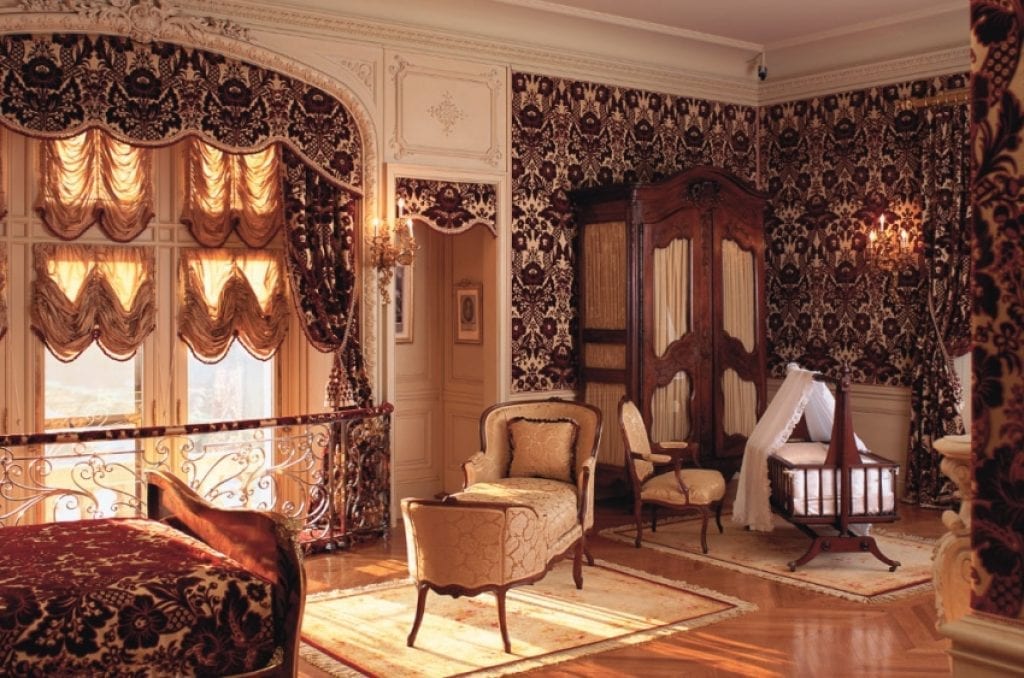
The Louis XV room, where Cornelia, William, and George were all born.
The third floor features a living hall and a number of guest bedrooms. The fourth floor has 21-bedrooms, that were inhabited by housemaids and other female servants (male servents were housed above the stable). The fourth floor also leads to the observatory, a wrought-iron balcony where Vanderbilt could view his estate.
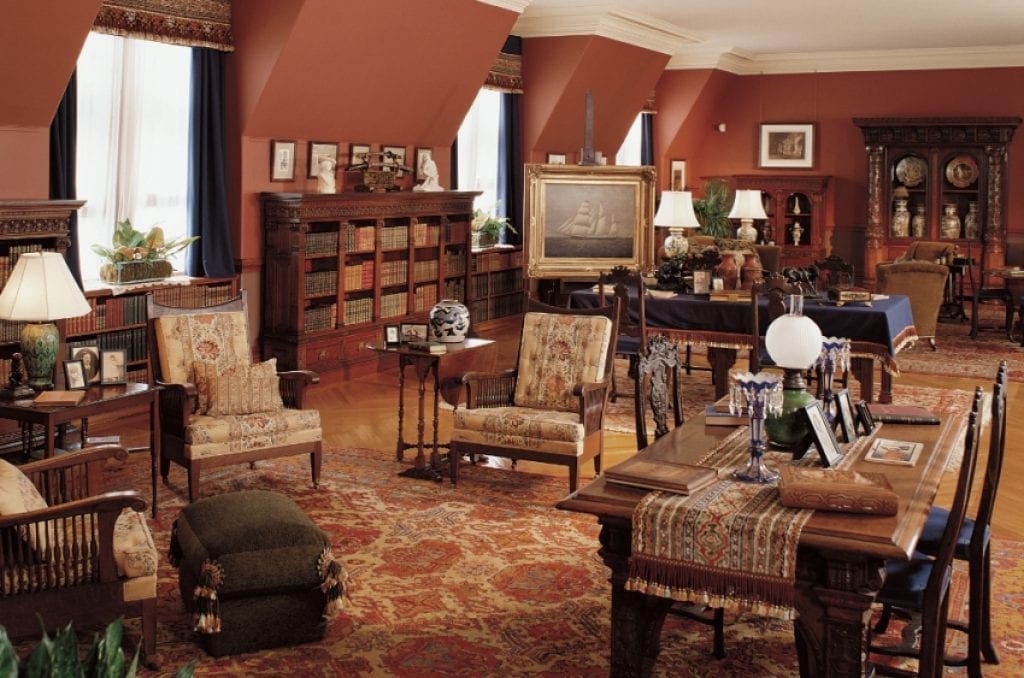
The Bachelors’ Wing, which was the last lived-in part of the house features a billiard room. This room has secret doors on either side of the fireplace, leading to the Smoking Room and Gun Room.
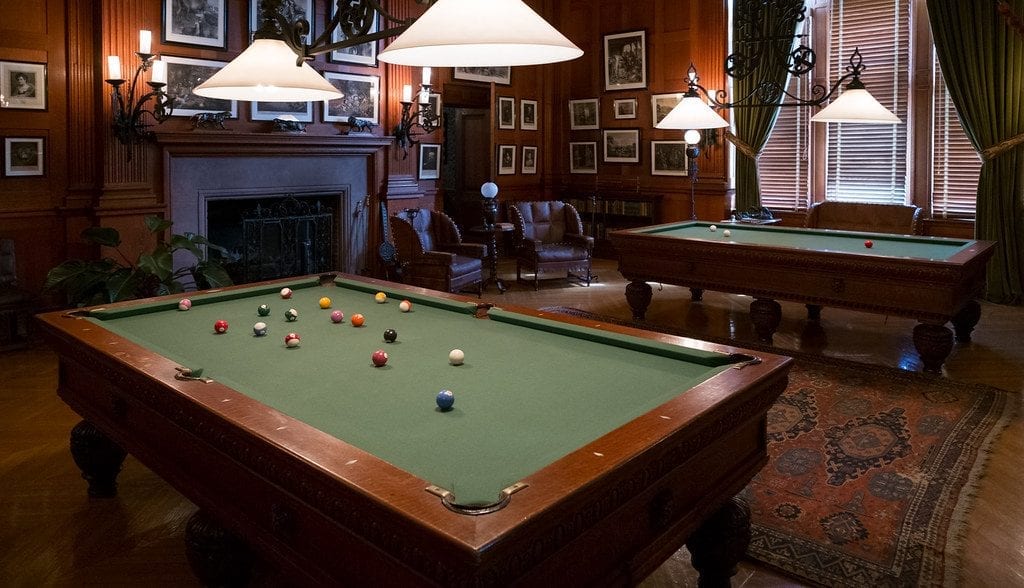
The billiard room, with fireplace on the back wall.

Secret door leading to the Smoking Room.
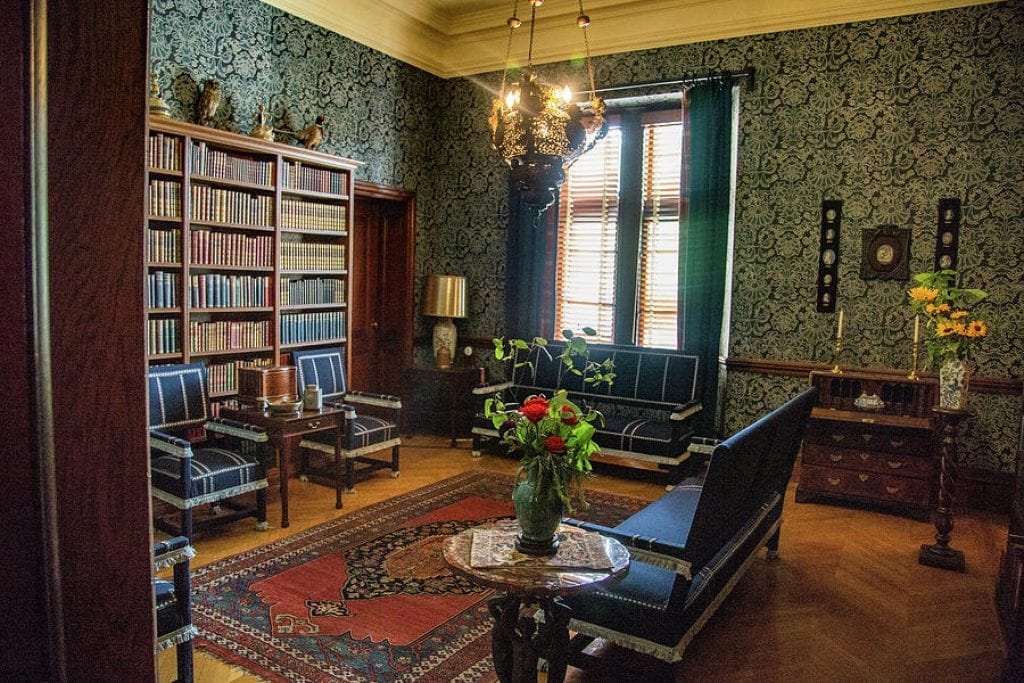
Inside the hidden smoking room.
Down in the basement, you can find a 70,000-gallon heated indoor swimming pool, bowling alley, and gymnasium. The basement, the largest in the USA, also acts as the service hub for the house.
It includes the main kitchen, pastry kitchen, rotisserie kitchen, servants dining hall, laundry rooms and additional bedrooms for staff all located there.
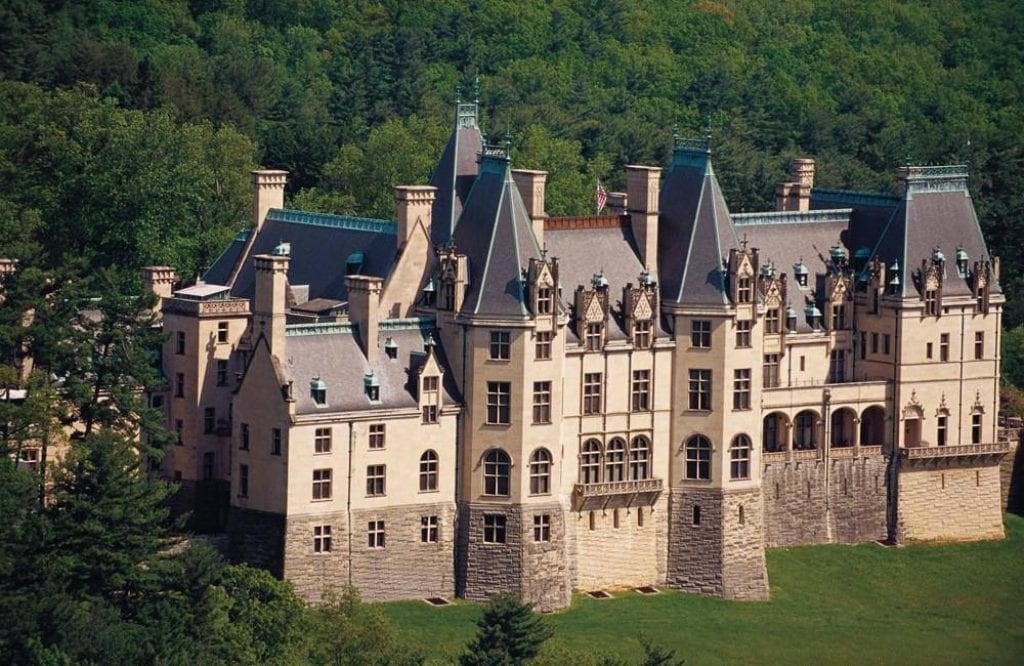
The back of Biltmore house, showing just how large the basement of the property is.

The swimming pool, empty, with original lighting.
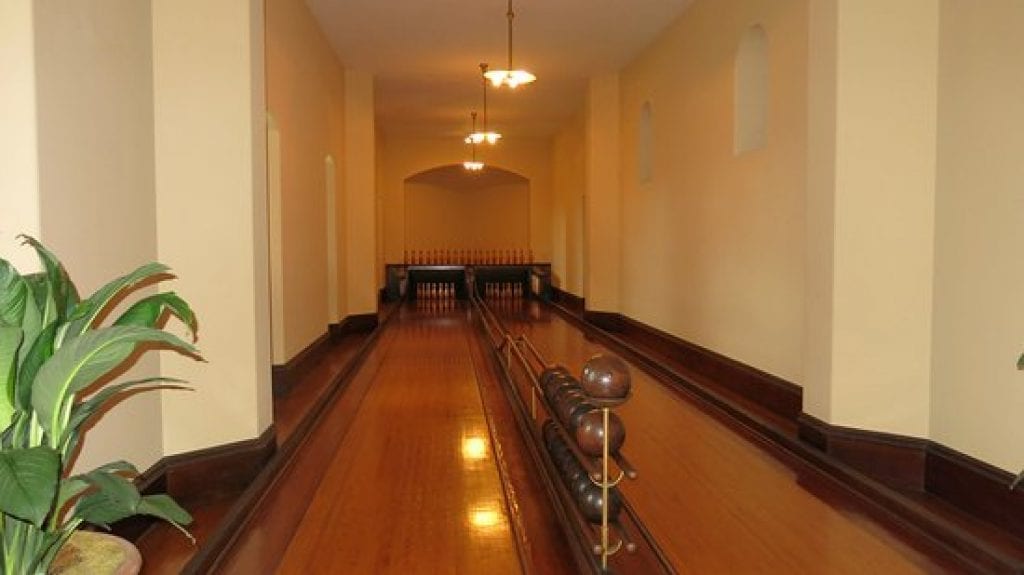
The two-lane bowling alley.
THE REST OF THE BILTMORE ESTATE
While the house is obviously the centerpiece of the estate, the sprawling 8,000-acre property has a lot more going on these days. This includes two restaurants, four gift shops, a winery, a 210-room Inn, outdoor activity center and the Antler Hill Village.
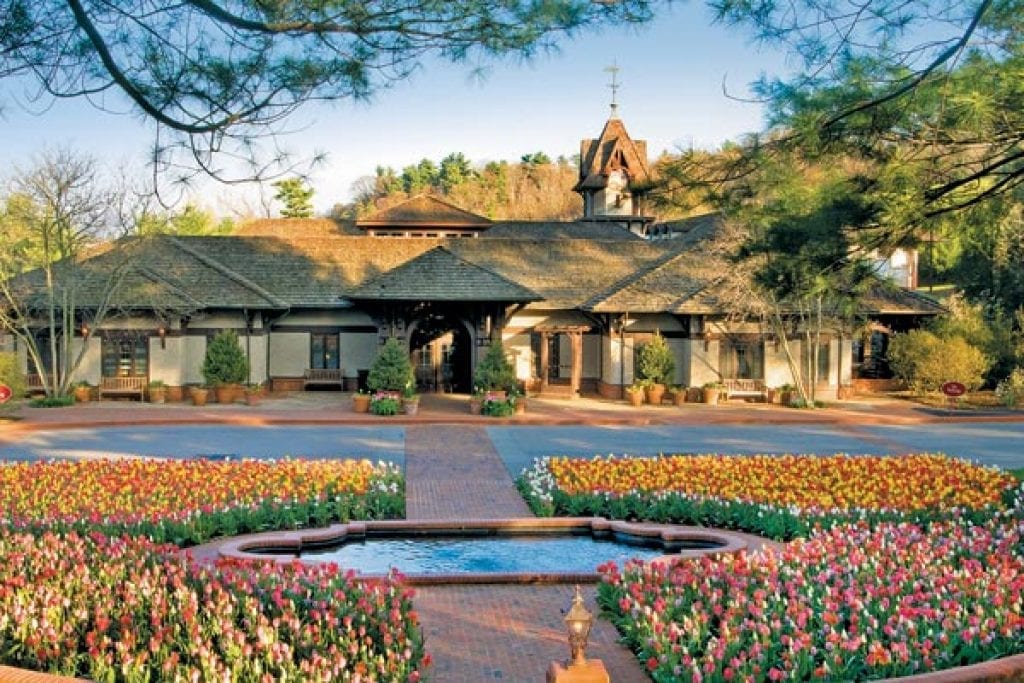
Biltmore Winery, located at the north of the Biltmore Estate.
OTHER ON-SCREEN APPEARANCES
While Biltmore may well be best recognized for its role in Richie Rich, the estate has featured on-screen in a number of other movies. This includes The Last of the Mohicans (1992), Forrest Gump (1994), Patch Adams (1998), Hannibal (2001) and the Hannibal TV series (2015).

